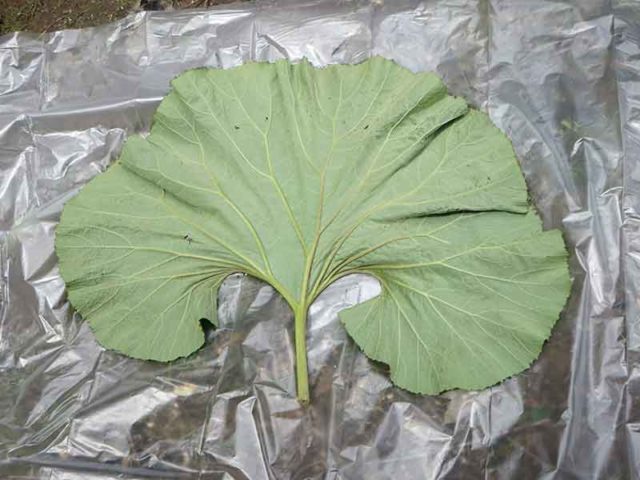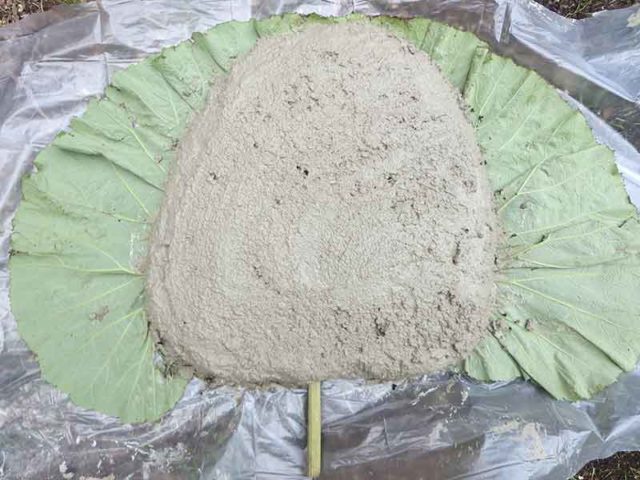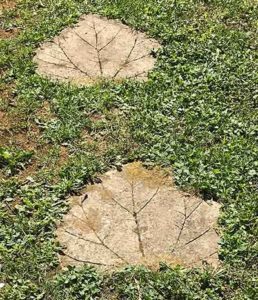This is our first full summer at our new house, and my husband and I have been working hard giving the yard and gardens a bit of a facelift. Cramming non-stop landscaping and gardening into such a short season is exhausting, but it’s also deeply satisfying, especially when a project like these DIY stepping stones turn out so well.
Our previous house had a more manicured look, something I had a hard time keeping up with, to tell you the truth. Long story short, when I wanted stepping stones in our backyard at that house, I simply went out and bought the pre-manufactured ones. It worked there, but our current home is surrounded by forest, and we’ve gone for a more rustic-country look. I wanted to create a pathway around the gardens that fit into nature while also being unique (and affordable!), and I could not be happier with how it turned out!
The original idea actually came from an article by Wendy LeBlanc in an old issue of Canadian Gardening magazine, which is no longer in existence. Luckily, good ideas don’t die, and my mom still had this DIY article lying around. The results are too beautiful not to share! All you need is a few hours, a little elbow grease, some cement, and some giant rhubarb leaves (although the original article says any leaf with large veins will work just as well)!
What You Will Need:
- Pre-Mixed Cement (we used seven standard-size to make 10 steps)
- Large-sized leaves with visible veins (rhubarb, hostas, ferns, etc.)
- Chicken wire
- Rubber gloves
- Trowel or shovel
- Plastic sheets
Here’s How To Do It:
1. You’ll want to make these stepping stones on a level surface that will remain undisturbed for several days. No animal or foot traffic!
2. Cut the plastic sheeting about a foot and a half larger all around the leaf and place it on the ground. Put the leaf in the center of the plastic, vein-side up.

3. Mix your concrete to a fairly thick consistency. We experimented a little, and I found that adding a bit more water to the cement made it much easier to spread over the leaf. Don’t make it so wet that it runs, though.
4. Take your trowel and spread the concrete almost to the edge of the leaf, to a thickness of about 1” to 1.5”. Press the mixture firmly to eliminate any air bubbles.

5. Cut some chicken wire and press it firmly into the cement mixture, making sure it isn’t visible from the edges of the stone. The chicken wire will help make your steps strong and durable. Spread another 1” to 1.5” of concrete over top the chicken wire, again pressing firmly to get rid of air bubbles. If you live in a colder climate, it’s especially important that you make your steps thicker so they can survive frost.

6. Lift the plastic up over the edges of your stone, and place earth or gravel up around the sides to create a form for your step while it cures. Cover the top with another piece of plastic so it doesn’t completely dry out.

7. Allow curing for at least 48 hours. After two days, remove the plastic from the stone and gently turn it over to see the veins. At this point, you can remove any remaining pieces of leaf on the stone with your hose.

Tip
You can place the stones in your garden right away, but make sure you don’t actually step on them until the concrete has completely cured. It depends on the mix you’ve used, but that could take up to a week.
And Voila! Now you have yourself some beautiful and unique-looking stepping stones that blend into nature! They only look nicer as time goes on; you can even spread some moss seed or another ground cover to fill in some of the veins. Did I mention they were affordable? We spent $25 making 10 stones!
These babies are sure to be a conversation piece at your next backyard BBQ!


